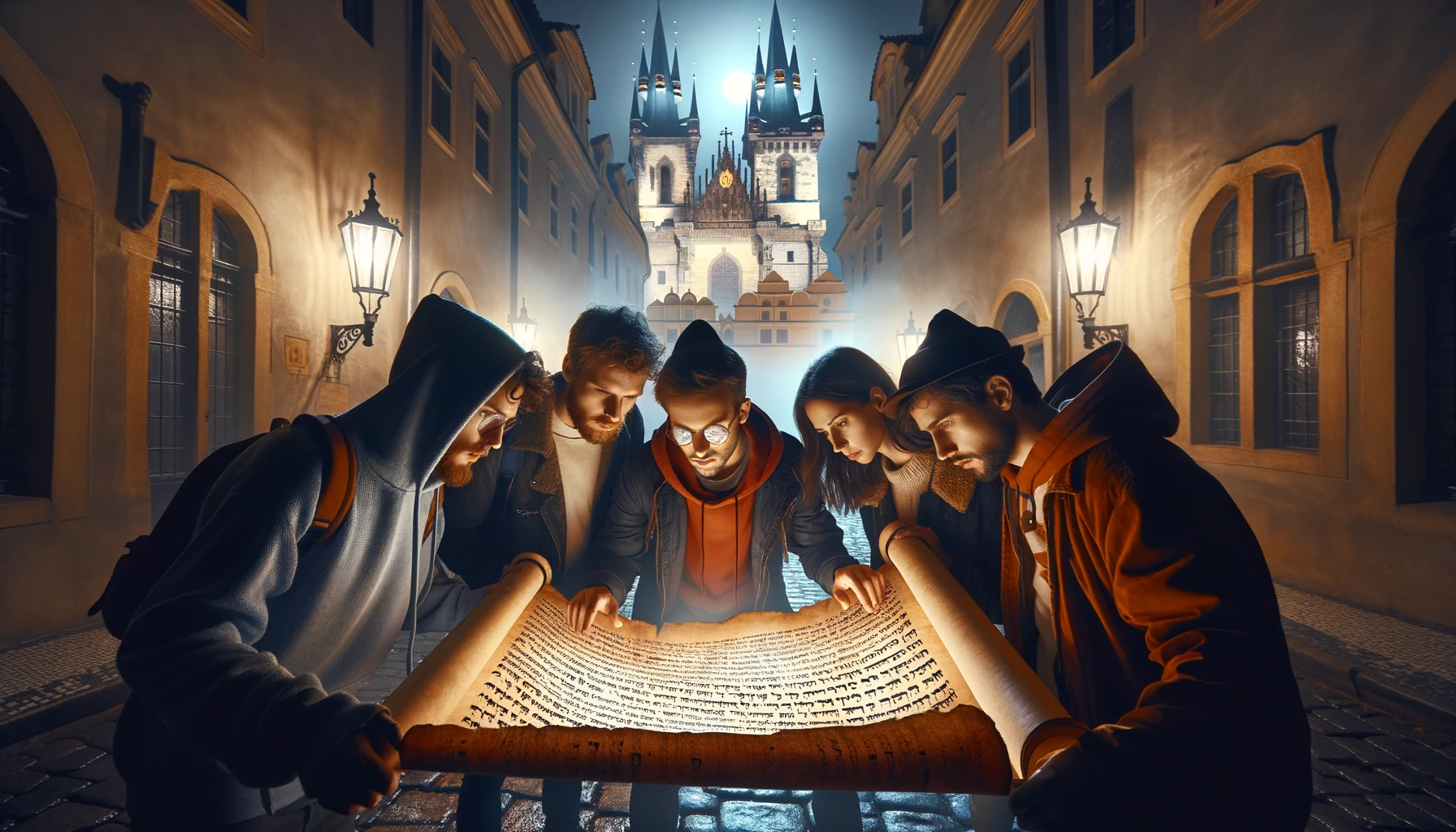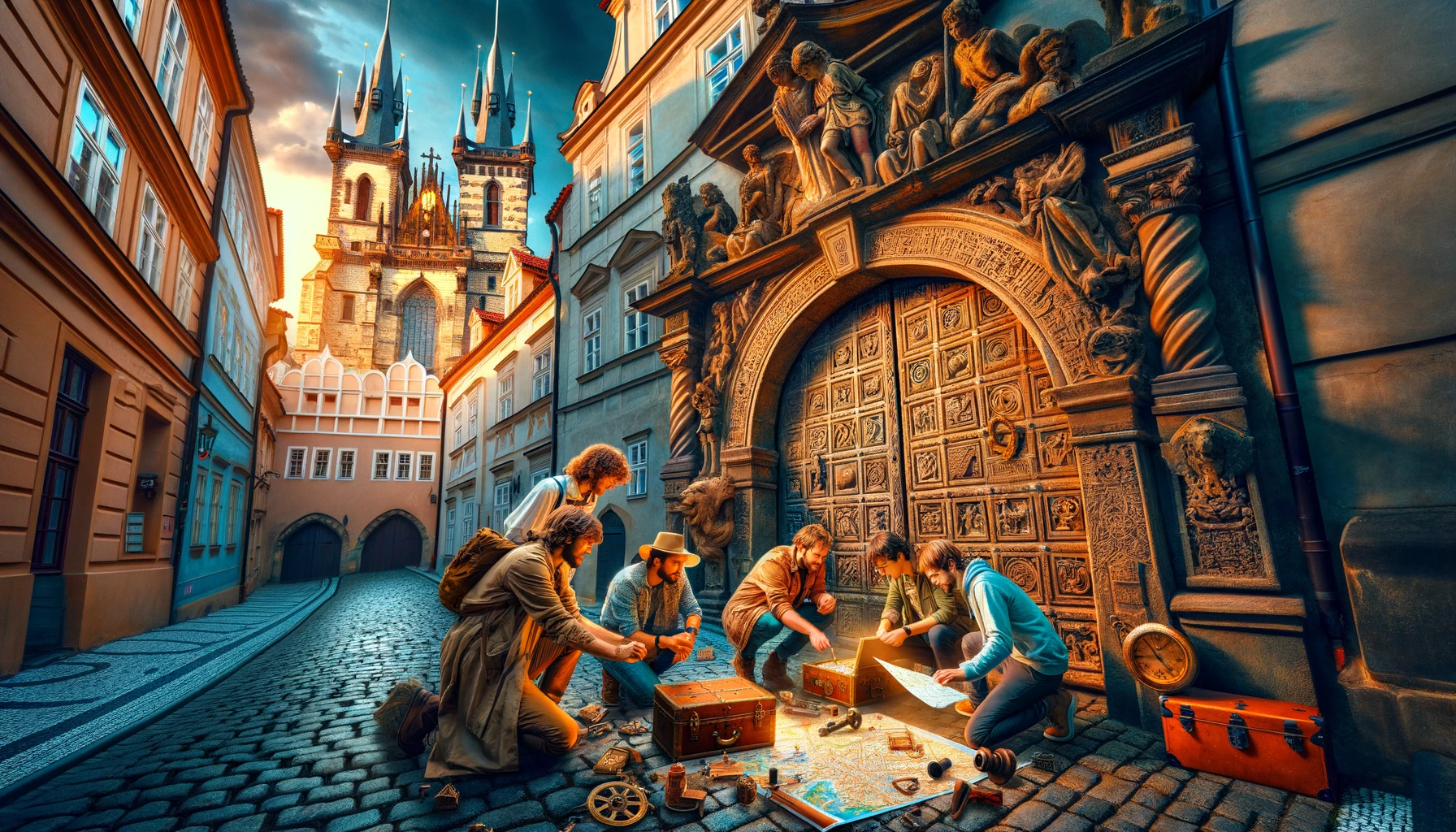 Zpět na seznam
Zpět na seznamMozart, Kepler and Rudolph II in the Lesser Town: The Magic of Outdoor Escape Games

Welcome to another installment of our beloved series “Prague Walks”, where each week we uncover the magic of historical monuments and hidden corners of our beautiful Prague through exciting outdoor escape games. In previous articles, we embarked on an adventurous journey from Vyšehrad, through the Petřín Lookout Tower, to the picturesque streets of the Lesser Town.
Today, we invite you to see the Lesser Town with different eyes. Walk in the footsteps of Mozart, Kepler, and Rudolph II and discover fascinating stories that come to life in the magical atmosphere of ancient Prague.
Church of St. Thomas
Mozart’s connection to the church and its historical significance
Not everyone knows that Wolfgang Amadeus Mozart, one of the greatest musical composers of all time, also left his mark in Prague, specifically in the Church of St. Thomas. During his visit to Prague, Mozart played the organ here and premiered his famous composition “Mass in C Major” in 1791. This moment is still considered one of the pearls in the history of the church.

Astronomical connection with Johannes Kepler
Johannes Kepler, the leading astronomer of his time, also found refuge in the vicinity of the Church of St. Thomas. Kepler used the church observatory for his celestial observations, which led to the formulation of the laws of planetary motion. This connection between science and the spiritual world gives the Church of St. Thomas a unique atmosphere.
Baroque transformation of the church
Originally built in the 14th century in the Gothic style, the church underwent a significant Baroque transformation at the beginning of the 18th century under the leadership of the architect Kilian Ignaz Dientzenhofer, a master of Baroque architecture in Bohemia. This transformation brought the church a new dimension of beauty and artistic value.

The church as a haven for art and artists
Church of St. Thomas became a haven for art and artists, including the works of the famous Baroque sculptor Ferdinand Maximilian Brokoff. His works of art contributed to the fact that the church is today considered a treasury of Baroque art.
Maltese Square
History of the chivalric orders and their influence on the square
Maltese Square boasts a rich history dating back to the 12th century. This square was the center of activity for the chivalric orders, especially for the Order of the Knights of Malta, who had their headquarters here. The Grand Priory Palace, a key building near the square, stands as a monument to their long-standing presence and influence on the history of Prague.
Cultural evolution of the square
Since its foundation, Maltese Square has undergone many transformations, from a strategic military site to a cultural and social center. Today, the square is a lively place full of embassies, art galleries, cafes, and restaurants.

Alchemical secrets and Rudolf II
During the reign of Emperor Rudolf II, who had a weakness for occult sciences and alchemy, the Lesser Town became a center for alchemical studies. The square and its surroundings were the scene of secret experiments that aimed to find the elixir of youth or transmute metals into gold, and attracted many alchemists and astronomers from all over Europe.
Architectural gems of the square
The Lesser Town Square is surrounded by some of the most important architectural monuments of Prague, which reflect the changes in taste and power over the centuries. Among them stands out the Church of Our Lady Beneath the Chain, one of the oldest buildings in the area, dating back to the Middle Ages.
Charles Bridge
The legend of the egg in the mortar
Legend has it that the mortar used in the construction of Charles Bridge incorporated eggs to increase its durability. This quirky detail highlights the innovative approaches to construction during the medieval period.
The secrets of the statues and their stories
The statues that line Charles Bridge are not just decorations, but each one tells its own story or hides a secret. Touching the statue of St. John of Nepomuk, for example, is said to bring happiness and wealth.

Royal dedication and significant dates
The foundation stone of Charles Bridge was laid by Emperor Charles IV himself. The construction began on the king’s orders in 1357 on July 9th at 5:31 a.m., exactly according to the calculation of the royal astrologers. This moment was to ensure the strength and longevity of the structure. The construction was completed in 1402.
Floods and the bridge’s resilience
Charles Bridge has withstood numerous floods throughout its history, most notably in 1890, 1940, and 2002. Each time, the bridge demonstrated remarkable resilience, though repairs were often needed to restore its structure and statuary.

Hidden messages and symbols
Gothic towers, especially the Old Town Bridge Tower, are decorated with symbols and inscriptions that reflect the power and influence of Charles IV. These hidden messages offer a glimpse into the historical and cultural context of the bridge’s construction.
Learning about history through escape games allows you to experience the past firsthand and discover its secrets in a fun and interactive way. Outdoor escape games in Prague offer a unique opportunity to explore the Lesser Town and its sights in a whole new way, full of adventure and discovery.
Don’t miss out on the other stories and secrets that Prague hides.
Visit the Hunter Games blog for more inspiration and join our community of adventurers and history enthusiasts. Share your experiences, tips for exploring the Lesser Town, and discover the magic of Prague together with us.




